This site uses cookies as defined in our Cookie Policy, by continuing to use this site you agree to their use.
Continue
A festive season like no other, celebrate surrounded by turquoise seas, jungled islands, and reclining palm trees. Breathe in hints of cardamom, cinnamon and cloves on Zanzibar’s Spice Island’s fragrant air, before negotiating tight alleyways in Stone Town. Nosy Be is pure Madagascan indulgence, think strips of powder-soft white sand, shallow azure waters and dense vegetation where lemurs swing freely. A truly unique way to spend Christmas, immersed in glorious Indian Ocean vistas.
| Arrive | Depart | ||||||
| 18th18 | DecDec | 202424 | Mahé, Seychelles, embark on the Silver Spirit | 18:00 | |||
| Like jade-coloured jewels in the Indian Ocean, the more than 100 Seychelles Islands are often regarded as the Garden of Eden. Lying just four degrees south of the equator, the Seychelles are some 1,000 miles (1,610 km) from the nearest mainland Africa. Little more than 200 years ago, all 115 islands were uninhabited. Then in 1742 a French ship dispatched from Mauritius sailed into one of the small bays. Captain Lazare Picault was the first to explore these unnamed islands. He encountered breathtaking vistas of rugged mountains, lagoons, coral atolls, splendid beaches and secluded coves. After Picault sailed away, the islands remained untouched for the next 14 years. Then France took possession of the seven islands in the Mahé group. During an expedition Captain Morphey named them the Sechelles, in honour of Vicomte Moreau de Sechelles. This name was later anglicised to Seychelles. The first settlers arrived at St. Anne’s Island in 1770; 15 years later the population of Mahé consisted of seven Europeans and 123 slaves. Today there are about 80,000 Seychellois, the majority of whom live on Mahé; the rest are scattered in small communities throughout the archipelago. The people are a fusion of three continents - Africa, Asia and Europe. This has created a unique culture and the use of three languages - Creole, French and English. Mahé is the largest island in the archipelago and the location of the capital, Victoria. Ringed by steep, magnificent mountains, few capitals can claim a more beautiful backdrop. The town features a mixture of modern and indigenous architecture; it is the centre of business and commerce thanks to the extensive port facilities. Noteworthy sites in Victoria are the museum, cathedral, government house, clock tower, botanical gardens and an open-air market. The major attractions are found outside of town where the island’s quiet, lazy atmosphere delights visitors. With 68 pristine, white sand beaches, Mahé boasts more beaches and tourist facilities than any of the other Seychelles Islands. Beautiful and remote Mahé with its green-clad mountains and palm-fringed beaches is indeed an island of abundance; pleasant surprises are around every bend in the trail. Come ashore and discover for yourself this marvellous island paradise. Few places on Earth can claim to have been as blessed by nature as Mahe. Set in the remote Seychelles archipelago over 1,500 kilometres east of Mombasa, Mahe is largest of the 115 islands and is home to so many stunning attractions you won’t know where to begin. For many the Seychelles are the destination of a lifetime. Cerulean seas, miles and miles of beach, lush, tropical jungle and surreal, natural beauty as far as the eye can see. Not only does Mahe boast 68 pristine beaches, it is dominated by the towering peaks of the Morne Seychellois National Park. This splendid National Park takes up over 20% of the island and is home to a vast amount of endemic flora and fauna, including the ultra-rare Seychelles Scops-owl. Unsurprisingly, the crystal clear waters are a diver’s heaven, promising a colourful cornucopia of underwater life, regardless of how experienced you are. Despite the island being visited in 1609 by the British, Mahe did not feature on any maps until 1742, when Frenchman Lazare Picault explored the as yet unnamed islands. However, it took a further 14 years for the French to lay claim to the islands, with the arrival of naval ship Le Cerf, captained by Corneille Morphey who christened the archipelago after Vicomte Moreau de Sechelles. He did this by setting down a Stone of Possession, which is on display in the National Museum. The first settlers arrived in 1770 and 15 years later the population had swelled to 130 – 7 Europeans and 123 slaves. Today, there are 80,000 Seychellois. | |||||||
| 19th19 | DecDec | 202424 | At Sea | ||||
| 20th20 | DecDec | 202424 | At Sea | ||||
| 21st21 | DecDec | 202424 | Zanzibar, Tanzania | ||||
| This ancient isle once ruled by sultans and slave traders served as the stepping stone into the African continent for missionaries and explorers. Today it attracts visitors intent on discovering sandy beaches, pristine rain forests, or colorful coral reefs. Once known as the Spice Island for its export of cloves, Zanzibar has become one of the most exotic flavors in travel, better than Bali or Mali when it comes to beauty that’ll make your jaw drop.Separated from the mainland by a channel only 35 km (22 miles) wide, and only 6 degrees south of the equator, this tiny archipelago—the name Zanzibar also includes the islands of Unguja (the main island) and Pemba—in the Indian Ocean was the launching base for a romantic era of expeditions into Africa. Sir Richard Burton and John Hanning Speke used it as their base when searching for the source of the Nile. It was in Zanzibar where journalist Henry Morton Stanley, perched in an upstairs room overlooking the Stone Town harbor, began his search for David Livingstone.The first ships to enter the archipelago's harbors are believed to have sailed in around 600 BC. Since then, every great navy in the Eastern Hemisphere has dropped anchor here at one time or another. But it was Arab traders who left an indelible mark. Minarets punctuate the skyline of Stone Town, where more than 90% of the residents are Muslim. In the harbor you'll see dhows, the Arabian boats with triangular sails. Islamic women covered by black boubou veils scurry down alleyways so narrow their outstretched arms could touch buildings on both sides. Stone Town received its odd name because most of its buildings were made of limestone and coral, which means exposure to salty air has eroded many foundations.The first Europeans who arrived here were the Portuguese in the 15th century, and thus began a reign of exploitation. As far inland as Lake Tanganyika, slave traders captured the residents or bartered for them from their own chiefs, then forced the newly enslaved to march toward the Indian Ocean carrying loads of ivory tusks. Once at the shore they were shackled together while waiting for dhows to collect them at Bagamoyo, a place whose name means, "here I leave my heart." Although it's estimated that 50,000 slaves passed through the Zanzibar slave market each year during the 19th century, many more died en route.Tanganyika and Zanzibar merged in 1964 to create Tanzania, but the honeymoon was brief. Zanzibar's relationship with the mainland remains uncertain as calls for independence continue. "Bismillah, will you let him go," a lyric from Queen's "Bohemian Rhapsody," has become a rebel chant for Zanzibar to break from Tanzania.Zanzibar Island, locally known as Unguja, has amazing beaches and resorts, decent dive spots, acres of spice plantations, the Jozani Forest Reserve, and Stone Town. Plus, it takes little more than an hour to fly there. It's a popular spot to head post-safari.Stone Town, the archipelago's major metropolis, is a maze of narrow streets lined with houses featuring magnificently carved doors studded with brass. There are 51 mosques, 6 Hindu temples, and 2 Christian churches. And though it can rightly be called a city, much of the western part of the larger island is a slumbering paradise where cloves, as well as rice and coconuts, still grow.Although the main island of Unguja feels untouched by the rest of the world, the nearby islands of Pemba and Mnemba offer retreats that are even more remote. For many years Arabs referred to Pemba as Al Khudra, or the Green Island, and indeed it still is, with forests of king palms, mangos, and banana trees. The 65-km-long (40-mile-long) island is less famous than Unguja except among scuba divers, who enjoy the coral gardens with colorful sponges and huge fans. Archaeology buffs are also discovering Pemba, where sites from the 9th to the 15th century have been unearthed. At Mtambwe Mkuu coins bearing the heads of sultans were discovered. Ruins along the coast include ancient mosques and tombs. In the 1930s Pemba was famous for its sorcerers, attracting disciples of the black arts from as far away as Haiti. Witchcraft is still practiced, and, oddly, so is bullfighting. Introduced by the Portuguese in the 17th century, the sport has been improved by locals, who rewrote the ending. After enduring the ritual teasing by the matador's cape, the bull is draped with flowers and paraded around the village.Beyond Pemba, smaller islands in the Zanzibar Archipelago range from mere sandbanks to Changu, once a prison island and now home to the giant Aldabra tortoise, Chumbe Island, and Mnemba, a private retreat for guests who pay hundreds of dollars per day to get away from it all. A tropical paradise, with swathes of long white sand and flanked by tall, skinny, palm trees, Zanzibar sits in the clear blue waters of the Indian Ocean. Part of the Zanzibar archipelago, the island – also confusingly called Zanzibar – is found just 22 miles from mainland Tanzania. Considered today as a honeymooners’ paradise, visitors will find vestiges of both Arabic and Portuguese colonialism (the island was Portuguese until 1698 when it was seized by the Sultanate of Oman), amid the picture perfect landscape. But there is much more to Zanzibar than meets the eye. With just one step off the ship, and you are already breathing the heady scents of nutmeg, cinnamon, vanilla and cloves. Rightfully known as the Spice Isle, Zanzibar was once a trading hotspot on the trading route from Arabia to Africa. At the time, the island enjoyed an influx of wealth and European bourgeoisie, with spices being traded at astronomical prices. The influences of the various colonies are glamorously reflected in the main city’s architecture. But sensual smells and beautiful beaches aside, Zanzibar has the vestiges of sinister history. The island was a capital for the slave trade in the 19th century, with an estimated 50,000 slaves passing through the Zanzibar slave market each year, with many more dying en route. The epicentre for trade was in the Market Square, in the heart of Stone Town, a melting pot of Arabic, African and European history that today is one of the world’s most popular UNESCO World Heritage Sites. | |||||||
| 22nd22 | DecDec | 202424 | Zanzibar, Tanzania | 13:00 | |||
| This ancient isle once ruled by sultans and slave traders served as the stepping stone into the African continent for missionaries and explorers. Today it attracts visitors intent on discovering sandy beaches, pristine rain forests, or colorful coral reefs. Once known as the Spice Island for its export of cloves, Zanzibar has become one of the most exotic flavors in travel, better than Bali or Mali when it comes to beauty that’ll make your jaw drop.Separated from the mainland by a channel only 35 km (22 miles) wide, and only 6 degrees south of the equator, this tiny archipelago—the name Zanzibar also includes the islands of Unguja (the main island) and Pemba—in the Indian Ocean was the launching base for a romantic era of expeditions into Africa. Sir Richard Burton and John Hanning Speke used it as their base when searching for the source of the Nile. It was in Zanzibar where journalist Henry Morton Stanley, perched in an upstairs room overlooking the Stone Town harbor, began his search for David Livingstone.The first ships to enter the archipelago's harbors are believed to have sailed in around 600 BC. Since then, every great navy in the Eastern Hemisphere has dropped anchor here at one time or another. But it was Arab traders who left an indelible mark. Minarets punctuate the skyline of Stone Town, where more than 90% of the residents are Muslim. In the harbor you'll see dhows, the Arabian boats with triangular sails. Islamic women covered by black boubou veils scurry down alleyways so narrow their outstretched arms could touch buildings on both sides. Stone Town received its odd name because most of its buildings were made of limestone and coral, which means exposure to salty air has eroded many foundations.The first Europeans who arrived here were the Portuguese in the 15th century, and thus began a reign of exploitation. As far inland as Lake Tanganyika, slave traders captured the residents or bartered for them from their own chiefs, then forced the newly enslaved to march toward the Indian Ocean carrying loads of ivory tusks. Once at the shore they were shackled together while waiting for dhows to collect them at Bagamoyo, a place whose name means, "here I leave my heart." Although it's estimated that 50,000 slaves passed through the Zanzibar slave market each year during the 19th century, many more died en route.Tanganyika and Zanzibar merged in 1964 to create Tanzania, but the honeymoon was brief. Zanzibar's relationship with the mainland remains uncertain as calls for independence continue. "Bismillah, will you let him go," a lyric from Queen's "Bohemian Rhapsody," has become a rebel chant for Zanzibar to break from Tanzania.Zanzibar Island, locally known as Unguja, has amazing beaches and resorts, decent dive spots, acres of spice plantations, the Jozani Forest Reserve, and Stone Town. Plus, it takes little more than an hour to fly there. It's a popular spot to head post-safari.Stone Town, the archipelago's major metropolis, is a maze of narrow streets lined with houses featuring magnificently carved doors studded with brass. There are 51 mosques, 6 Hindu temples, and 2 Christian churches. And though it can rightly be called a city, much of the western part of the larger island is a slumbering paradise where cloves, as well as rice and coconuts, still grow.Although the main island of Unguja feels untouched by the rest of the world, the nearby islands of Pemba and Mnemba offer retreats that are even more remote. For many years Arabs referred to Pemba as Al Khudra, or the Green Island, and indeed it still is, with forests of king palms, mangos, and banana trees. The 65-km-long (40-mile-long) island is less famous than Unguja except among scuba divers, who enjoy the coral gardens with colorful sponges and huge fans. Archaeology buffs are also discovering Pemba, where sites from the 9th to the 15th century have been unearthed. At Mtambwe Mkuu coins bearing the heads of sultans were discovered. Ruins along the coast include ancient mosques and tombs. In the 1930s Pemba was famous for its sorcerers, attracting disciples of the black arts from as far away as Haiti. Witchcraft is still practiced, and, oddly, so is bullfighting. Introduced by the Portuguese in the 17th century, the sport has been improved by locals, who rewrote the ending. After enduring the ritual teasing by the matador's cape, the bull is draped with flowers and paraded around the village.Beyond Pemba, smaller islands in the Zanzibar Archipelago range from mere sandbanks to Changu, once a prison island and now home to the giant Aldabra tortoise, Chumbe Island, and Mnemba, a private retreat for guests who pay hundreds of dollars per day to get away from it all. A tropical paradise, with swathes of long white sand and flanked by tall, skinny, palm trees, Zanzibar sits in the clear blue waters of the Indian Ocean. Part of the Zanzibar archipelago, the island – also confusingly called Zanzibar – is found just 22 miles from mainland Tanzania. Considered today as a honeymooners’ paradise, visitors will find vestiges of both Arabic and Portuguese colonialism (the island was Portuguese until 1698 when it was seized by the Sultanate of Oman), amid the picture perfect landscape. But there is much more to Zanzibar than meets the eye. With just one step off the ship, and you are already breathing the heady scents of nutmeg, cinnamon, vanilla and cloves. Rightfully known as the Spice Isle, Zanzibar was once a trading hotspot on the trading route from Arabia to Africa. At the time, the island enjoyed an influx of wealth and European bourgeoisie, with spices being traded at astronomical prices. The influences of the various colonies are glamorously reflected in the main city’s architecture. But sensual smells and beautiful beaches aside, Zanzibar has the vestiges of sinister history. The island was a capital for the slave trade in the 19th century, with an estimated 50,000 slaves passing through the Zanzibar slave market each year, with many more dying en route. The epicentre for trade was in the Market Square, in the heart of Stone Town, a melting pot of Arabic, African and European history that today is one of the world’s most popular UNESCO World Heritage Sites. | |||||||
| 23rd23 | DecDec | 202424 | At Sea | ||||
| 24th24 | DecDec | 202424 | Nosy Bé, Madagascar | 08:00 | 18:00 | ||
| Nosy Bé, meaning Big Island in the Malagasy language, lies just a stone's throw off Madagascar's northwest coast. It is a remote and exotic destination. With its deserted beaches, rustic hotels and unhurried pace, it attracts travellers looking for a laid-back vacation. The fertile island is the centre for the production of perfume essence from the ylang-ylang trees. The heady scent of their flowers gave Nosy Bé the name "Perfumed Isle." Other local products include sugar cane, coffee, vanilla and pepper; they are grown for export in large plantations. Hellville, the island’s main town and port, is situated in a sheltered bay. It is named after a former French governor, Admiral de Hell. The town features a few old colonial buildings, a busy market, some small boutiques and tourist shops along the busy main street. At the quayside, vendors display embroidered linens, wood carvings and straw articles. Trips into the lush countryside may include a ride up to Mt. Passot. At 950 feet (285 metres), this is the highest point on the island. The view from the top offers an extensive panorama of crater lakes nestled between verdant hills. Most visitors make the boat trip to Nosy Komba. The tiny island is known for its lemur reserve. These arboreal primates, with their large eyes, soft fur and long curling tails, have lived unharmed for centuries in the forest behind Ampangorina village. The lemurs are a popular tourist attraction and a profitable source of income to the small local community. If you have ever wanted to go to somewhere that is remote and exotic, then you have come to the right place. The two right places in fact, as the islands of Nosy Be and Nosy Komba offer a chance to revel in nature that is uncommon, even in the Indian Ocean. There is a saying in Madagascar “same, same but different” and nothing could be more illustrative when describing Nosy Be and Nosy Komba. Both feature fertile forests sheltering endemic species but while Nosy Be (meaning Big Island) attracts holiday makers in search of a rustic, unhurried destination, Nosy Komba literally translates as Lemur Island, leaving nothing to the imagination when considering its main attractions. The aforementioned forests are without a doubt the jewel in both the islands’ crowns. The heady scent of ylang-ylang trees, vanilla and pepper gave Madagascar its moniker of the perfumed isle, and exports of spices and scents continue to be a pivotal part of the island’s economy. The island is essentially French speaking, after the queen of the Boina Sakalava tribe called upon the French from the nearby Reunion (thus inviting colonial rule) in 1841. If making the 20-minute boat trip to Nosy Komba (actual name Nosy Ambariovato) and the lemur park, then be prepared to be enchanted. The arboreal primates, with their enormous eyes, soft fur and long curling tails are both charismatic and friendly. Add cheeky to the list too, especially if you have any fruit in your hands. They’ll jump right out of the trees and take it from you. | |||||||
| 25th25 | DecDec | 202424 | At Sea | ||||
| 26th26 | DecDec | 202424 | At Sea | ||||
| 27th27 | DecDec | 202424 | Praslin Island, Seychelles | 08:00 | 23:00 | ||
| Forty kilometers (25 miles) northeast of Mahé, Praslin is just a 15-minute flight or 45-minute ferry ride away. Praslin, at 11 km (7 miles) long and 4 km (2.5 miles) wide, is the second-largest island in the Seychelles. First settled as a hideaway by pirates and Arab merchants, the island's original name, Isle de Palmes, bears testament to its reputation as home of the Vallée de Mai UNESCO World Heritage Site: the only place in the world where the famous Coco de Mer, the world's heaviest nut, grows abundantly in the wild. Praslin's endemic palm forests shelter many rare species, and the island is a major bird-watching destination. Surrounded by a coral reef, majestic bays, and gorgeous beaches, Praslin is much quieter and less developed than Mahé. With few real "sights," the pleasures of Praslin largely involve relaxing in or exploring its stunning beaches and fantastical forests. Loved by those who like their paradise just as nature intended, Praslin is one the Seychelles’ most beautiful islands. And why? Anse Lazio – the island’s beach is a repeated winner for world’s best, making the island is a pull for travellers who want to go the extra mile to find an unblemished island nirvana. Praslin might be the second largest of the Seychelles islands but at just 11 kilometres long and 4 kilometres wide, it is still very small. The difficulty in getting to it (other than arrival by sea there is a small airport that only flies to and from Mahe) means there are no modern attractions – on the contrary, entertainment comes very much in the flora and fauna of the land and surrounding sea. The island’s original name is Isle de Palmes and it’s not hard to see why. The lush jungle that makes up the island’s interior has it all; bubbling brooks, winding paths and towering trees that provide welcome respite from the sun. This is the true heart of the island; not only is the jungle home to the endemic Black Parrot (fewer than 1,000 of these birds are in existence) but also the famous Coco de Mer, the world's heaviest nut, grows abundantly in the wild. The nut is the stuff of legends. Early beliefs were that the palm grew under the Indian Ocean and that its fruit held healing powers. Even when it emerged that the tree did in fact grow on dry land, it still held mystique; the new folklore was that in order for the 25 kilo nut to grow, male and female trees had to embrace on a stormy night. | |||||||
| 28th28 | DecDec | 202424 | Mahé, Seychelles, disembark the Silver Spirit | ||||
| Like jade-coloured jewels in the Indian Ocean, the more than 100 Seychelles Islands are often regarded as the Garden of Eden. Lying just four degrees south of the equator, the Seychelles are some 1,000 miles (1,610 km) from the nearest mainland Africa. Little more than 200 years ago, all 115 islands were uninhabited. Then in 1742 a French ship dispatched from Mauritius sailed into one of the small bays. Captain Lazare Picault was the first to explore these unnamed islands. He encountered breathtaking vistas of rugged mountains, lagoons, coral atolls, splendid beaches and secluded coves. After Picault sailed away, the islands remained untouched for the next 14 years. Then France took possession of the seven islands in the Mahé group. During an expedition Captain Morphey named them the Sechelles, in honour of Vicomte Moreau de Sechelles. This name was later anglicised to Seychelles. The first settlers arrived at St. Anne’s Island in 1770; 15 years later the population of Mahé consisted of seven Europeans and 123 slaves. Today there are about 80,000 Seychellois, the majority of whom live on Mahé; the rest are scattered in small communities throughout the archipelago. The people are a fusion of three continents - Africa, Asia and Europe. This has created a unique culture and the use of three languages - Creole, French and English. Mahé is the largest island in the archipelago and the location of the capital, Victoria. Ringed by steep, magnificent mountains, few capitals can claim a more beautiful backdrop. The town features a mixture of modern and indigenous architecture; it is the centre of business and commerce thanks to the extensive port facilities. Noteworthy sites in Victoria are the museum, cathedral, government house, clock tower, botanical gardens and an open-air market. The major attractions are found outside of town where the island’s quiet, lazy atmosphere delights visitors. With 68 pristine, white sand beaches, Mahé boasts more beaches and tourist facilities than any of the other Seychelles Islands. Beautiful and remote Mahé with its green-clad mountains and palm-fringed beaches is indeed an island of abundance; pleasant surprises are around every bend in the trail. Come ashore and discover for yourself this marvellous island paradise. Few places on Earth can claim to have been as blessed by nature as Mahe. Set in the remote Seychelles archipelago over 1,500 kilometres east of Mombasa, Mahe is largest of the 115 islands and is home to so many stunning attractions you won’t know where to begin. For many the Seychelles are the destination of a lifetime. Cerulean seas, miles and miles of beach, lush, tropical jungle and surreal, natural beauty as far as the eye can see. Not only does Mahe boast 68 pristine beaches, it is dominated by the towering peaks of the Morne Seychellois National Park. This splendid National Park takes up over 20% of the island and is home to a vast amount of endemic flora and fauna, including the ultra-rare Seychelles Scops-owl. Unsurprisingly, the crystal clear waters are a diver’s heaven, promising a colourful cornucopia of underwater life, regardless of how experienced you are. Despite the island being visited in 1609 by the British, Mahe did not feature on any maps until 1742, when Frenchman Lazare Picault explored the as yet unnamed islands. However, it took a further 14 years for the French to lay claim to the islands, with the arrival of naval ship Le Cerf, captained by Corneille Morphey who christened the archipelago after Vicomte Moreau de Sechelles. He did this by setting down a Stone of Possession, which is on display in the National Museum. The first settlers arrived in 1770 and 15 years later the population had swelled to 130 – 7 Europeans and 123 slaves. Today, there are 80,000 Seychellois. | |||||||
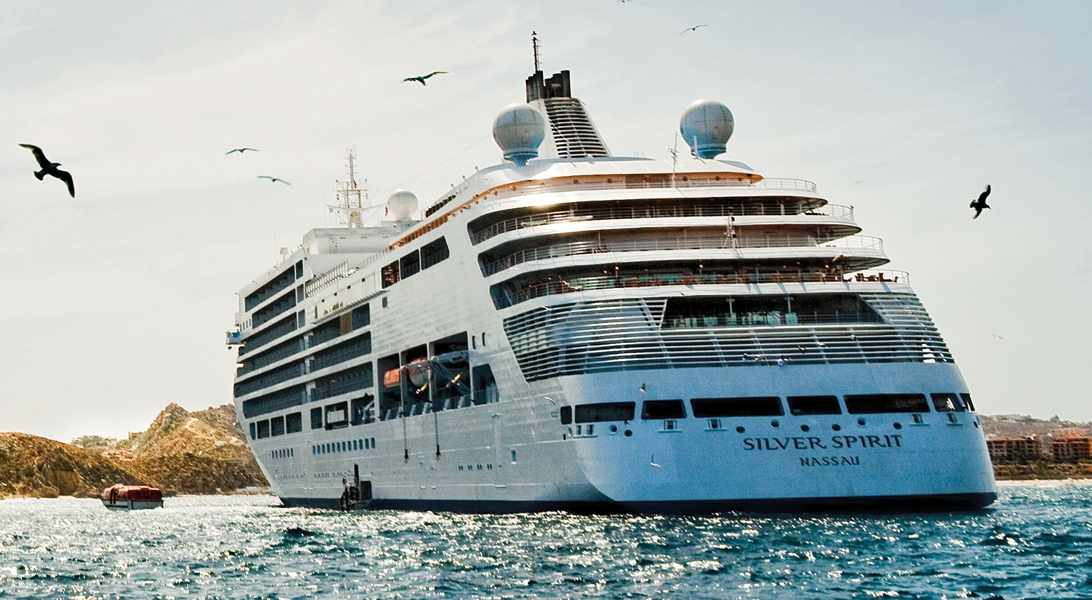
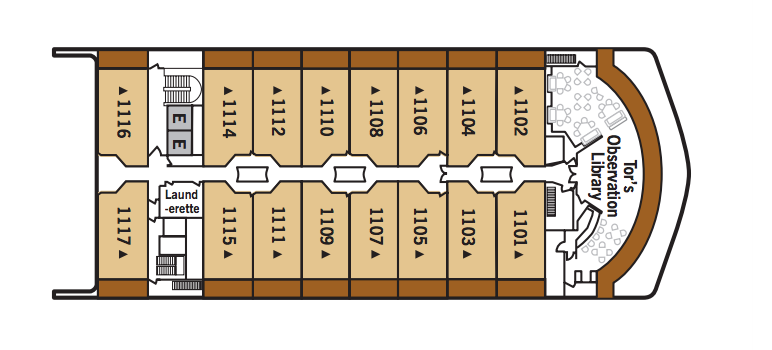







The images shown are for illustration purposes only and may not be an exact representation of what you find on the ship.
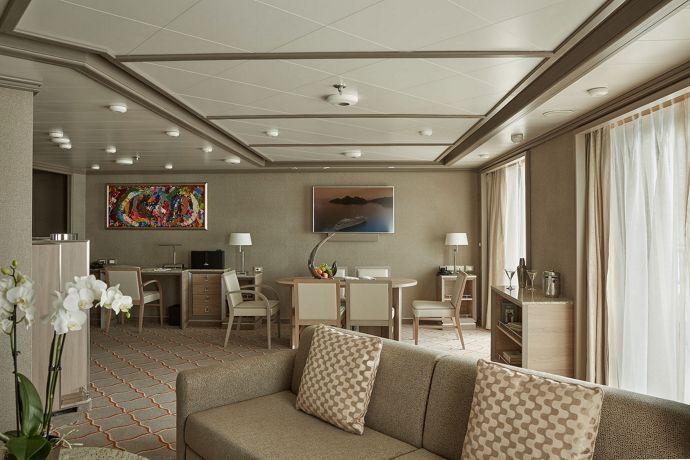
| Grade Code | From | To | |
| G1 | Grand Suite (1 Bedroom) | £12,900 | £12,900 |
| G2 | Grand Suite (2 Bedrooms) | £21,500 | £21,500 |
Expertly designed and exquisitely appointed. Ideal for entertaining friends while you cruise or enjoying a quiet dinner “at home”. Available as a one-bedroom configuration or as two-bedrooms by adjoining with a Veranda Suite.
One bedroom: 132-142 sq.m. including veranda
Two bedroom: 175 sq.m. including veranda
Please note that the 3rd guest will sleep on a comfortable sofa bed in the reception area of the suite.
Essentials
Characteristics
Furniture
Media & Communication
Onboard Services
Amenities
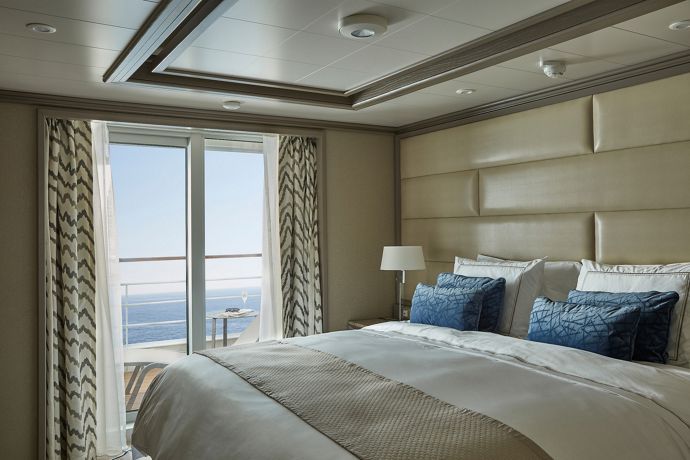
| Grade Code | From | To | |
| O1 | Owner's Suite (1 Bedroom) | £16,100 | £16,100 |
| O2 | Owner's Suite (2 Bedrooms) | £23,300 | £23,300 |
The name Owner's Suite says it all. A stylish apartment. Prestigious and classic. For those who seek the superlative level of space, comfort and service on board. Available as a one-bedroom configuration or as two-bedrooms by adjoining with Panorama Suite.
One bedroom: 1,292 sq. ft. / 120 m² including veranda
Two bedroom: 1,668 sq. ft. / 150 m² including veranda
Please note that the 3rd guest will sleep on a comfortable sofa bed in the reception area of the suite.
Essentials
Characteristics
Furniture
Media & Communication
Onboard Services
Amenities
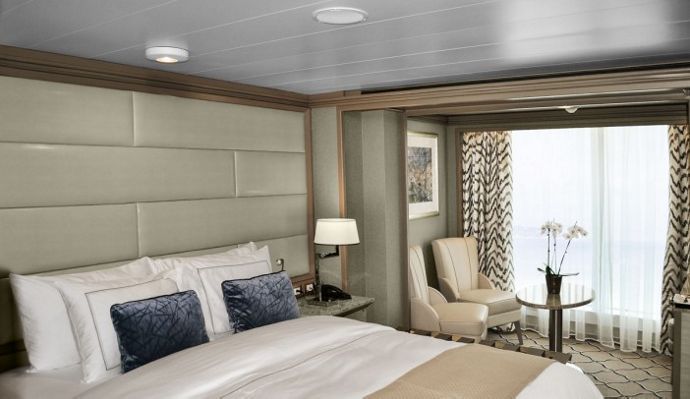
| Grade Code | From | To | |
| PA | Panorama Suite | £4,100 | £4,750 |
The Panorama Suite provides generous living space for voyagers. Located on deck 9, the Panorama offers all the comfort and attention to detail that you can expect aboard. A generous expanse of interior comforts — elegant décor, stunning marble bathroom and ample seating area, make this a cosy home away from home. The seating area of the Panorama Suite has plenty of room to relax, while large picture windows frame panoramic ocean views.
One bedroom: 334 ft² / 31 m²
Essentials
Characteristics
Furniture
Media & Communication
Onboard Services
Amenities

| Grade Code | From | To | |
| R1 | Royal Suite (1 Bedroom) | £10,900 | £10,900 |
| R2 | Royal Suite (2 Bedrooms) | £19,400 | £19,400 |
Stately describes the Royal Suite. Commanding and majestic. Perfect for entertaining. Enough living space to roam. The pinnacle of good living. Available as a one-bedroom configuration or as two bedrooms by adjoining with a Veranda Suite.
One bedroom: 92 sq.m. including veranda
Two bedroom: 127 sq.m. including veranda
Please note that the 3rd guest will sleep on a comfortable sofa bed in the reception area of the suite.
Essentials
Characteristics
Furniture
Media & Communication
Onboard Services
Amenities
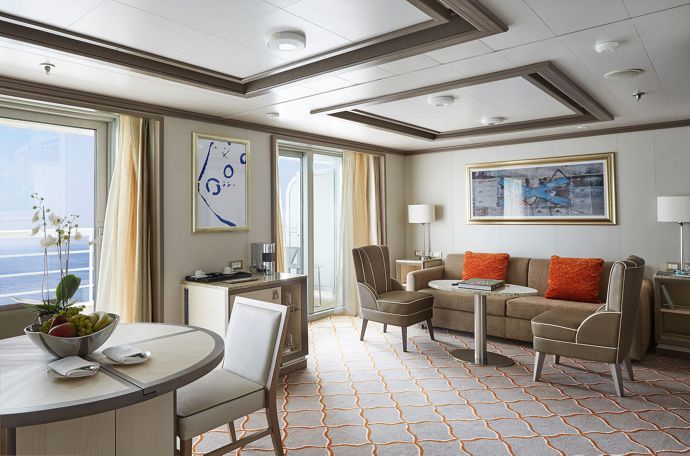
| Grade Code | From | To | |
| SL | Silver Suite | £7,600 | £7,600 |
| S2 | Silver Suite (2 Bedrooms) | £14,800 | £14,800 |
Step onto your terrace and bask in the calm feeling of the ocean breeze. Dissolve into the comfort of your king size bed. Prepare for the evening in the beautiful marble bathroom. The upper deck location gives the most spectacular of sea views, the spacious living area allows for comfortable relaxing where cosy nights in become veritable experiences in themselves. The two-bedroom configuration of this suite makes this it the ideal option for families.
One bedroom: 69 sq.m. including veranda
Please note that the 3rd guest will sleep on a comfortable sofa bed in the reception area of the suite.
Two bedroom: 100 sq.m. including veranda
Essentials
Characteristics
Furniture
Media & Communication
Onboard Services
Amenities
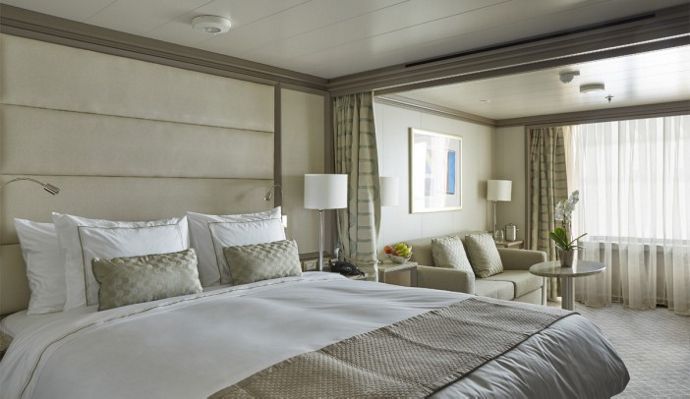
| Grade Code | From | To | |
| VI | Vista Suite | £3,800 | £4,450 |
A quiet sanctuary. The sitting area of the Vista Suite has plenty of room to relax. Large picture windows frame panoramic ocean views. The perfect backdrop for breakfast in bed during the cruise. Some Vista Suites accommodate three guests.
One bedroom: 32 sq.m.
Please note that the 3rd guest will sleep on a comfortable sofa bed in the reception area of the suite.
Essentials
Characteristics
Furniture
Media & Communication
Onboard Services
Amenities
The images shown are for illustration purposes only and may not be an exact representation of what you find on the ship.
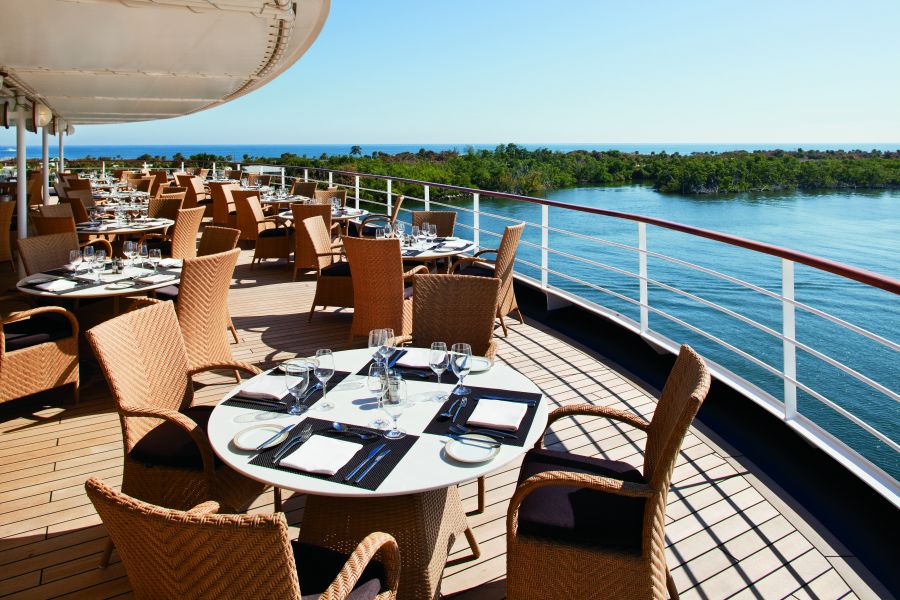
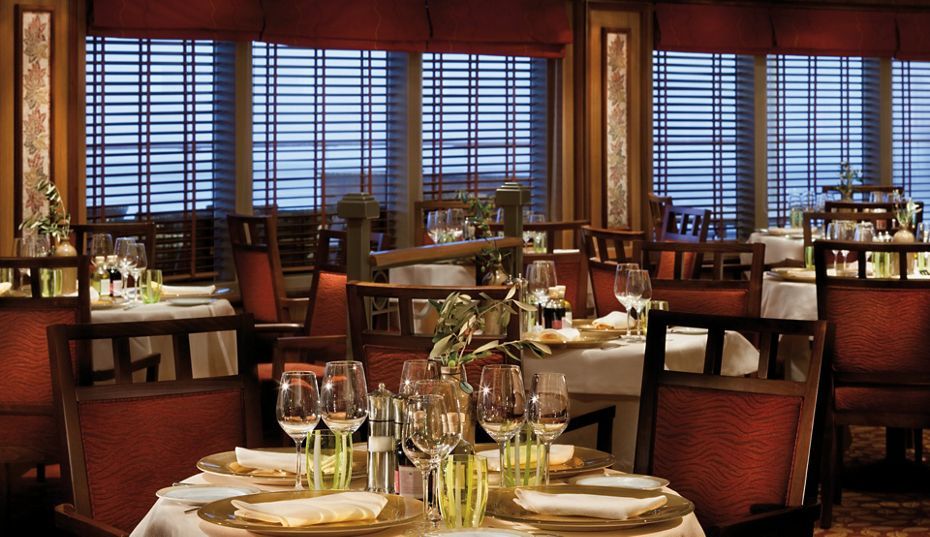
Authentic Italian recipes and the freshest, sustainable ingredients come together in this restaurant at sea.
On board this luxury cruise ship, a divine selection of Italy’s best cuisine is served à la carte in La Terrazza. Authentic recipes and the freshest ingredients come together with flair and passion — a flavourful expression of Silversea’s distinctive Italian herita ge. La Terrazza uses buffalo mozzarella from Naples, organic balsamic vinegar and olive oil from Umbria, and air-dried ham out of Parma. The Emilia-Romagna region also produces Silversea’s 24-month aged Parmigiano Reggiano, while the pasta is made daily right on board.La Terrazza is open for casual, buffet-style breakfast and lunch with indoor or al fresco dining on the outdoor terrace. During the evening, La Terrazza transforms into an à la carte traditional Italian restaurant.
Open-seating for breakfast and lunch. Reservations recommended for dinner.
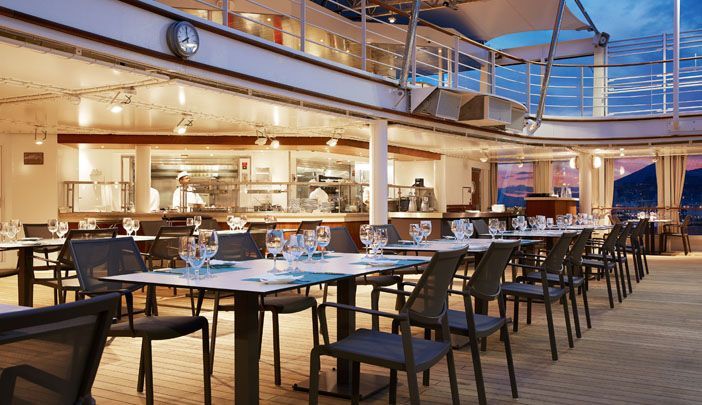
Soft breezes and ocean views beckon at the Grill, especially as the sun goes down when cruise guests gather for cocktails at the outdoor bar and talk about the day’s events.
One of the healthiest cuisines to exist, The Grill features lava stone cooking at its finest. Sourced from volcanic rock and placed in an oven to reach an optimum temperature of 400˚C, The Grill invites guests to cook their food directly at their table. Place your meat, fish or vegetables on top of the grill stone or inside the soup bowl, and then simply cook to your very own taste. Every bite is cooked to perfection, time after time. With the stone cooking available in the evenings only, The Grill becomes a gourmet salad and burger bar, offering build your own burgers from the best selections of meat.
Open seating for lunch. Reservation recommended for dinner.
The images shown are for illustration purposes only and may not be an exact representation of what you find on the ship.

The Library on board this luxury cruise ship has an extensive selection of hardcover books, magazines, reference materials and newspapers, as well as audio listening stations. Movies are also available and can be viewed on your in-suite entertainment centre.
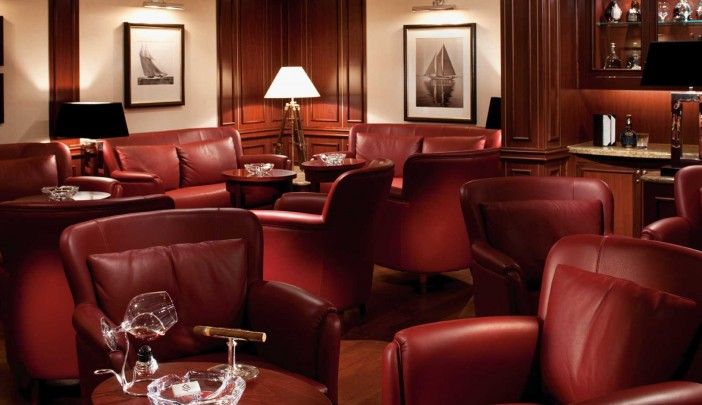
If you appreciate good cognac or premium cigars, be sure to visit the Connoisseur’s Corner to see the ship’s exceptional selection.
Discreet. Tasteful. Polished. If you appreciate the finer things in life, then the sophisticated touches of Connoisseur’s Corner will not disappoint. Rich and luxurious, yet airy and spacious, this indoor/outdoor venue is where you sip the finest cognac or whisky from a prestigious range and revel in the tranquil murmur of after-dinner conversation. A premium choice of cigars is also available, making this a perfect evening haven of serenity.
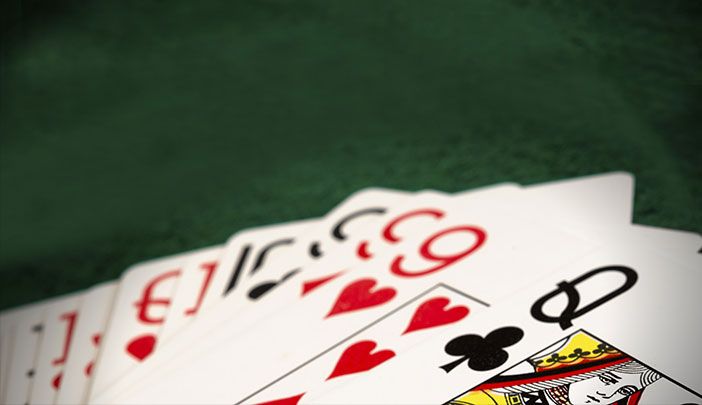
Whether it is for a card tournament or conference, Silversea will provide a dedicated space for the perfect guest experience.
Whatever your conference or meeting requirements, Silversea is pleased to provide a tailor-made experience. Audio-visual equipment is available and complimentary on board this luxury cruise ship.
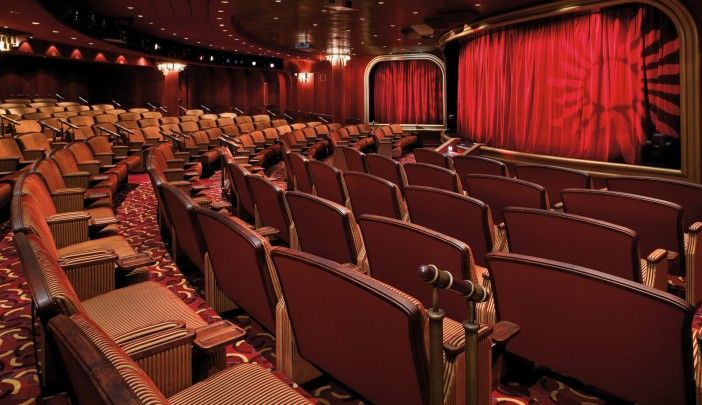
Applaud a broad spectrum of entertainment — from full-scale production shows and classical soloists, to cultural entertainment and feature films. Throughout your voyage, this luxury cruise ship’s Venetian Lounge also presents port talks, enrichment lectures and a variety of special events.
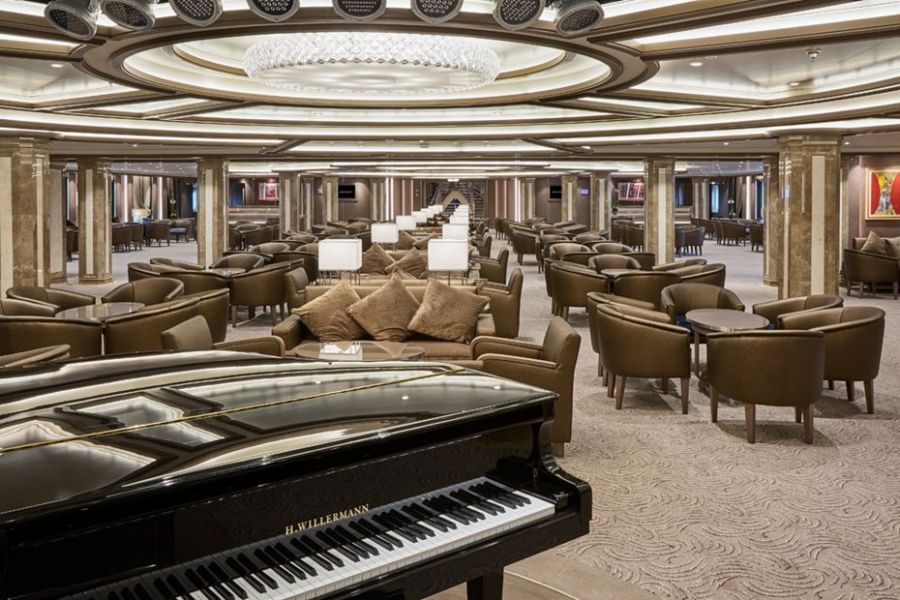
No cruise is complete without meeting new people. Enjoy complimentary drinks and live music at the bar while meeting other guests.
What could be a more fitting name for the very heart of Silver Spirit? Central to the soul and inspiration behind Silversea’s Italian heritage, Dolce Vita is the gathering place for our savvy travellers of the world, a place where guests mingle and exchange stories and where new faces become lifelong friends. Let us spoil you with an incredible array of flawless cocktails, wines and spirits, as you relax, enjoy the evening sounds of a live pianist and enjoy “the sweet life” aboard.
The images shown are for illustration purposes only and may not be an exact representation of what you find on the ship.
The images shown are for illustration purposes only and may not be an exact representation of what you find on the ship.
| Return flights including luggage allowance | |||
| Overseas Transfers | |||
| 10 nights aboard the Silver Spirit | |||
| Butler Service in Every Suite | |||
| Gratuities Always Included | |||
| Beverages In-Suite and Throughout the Ship | |||
| Gourmet Dining | |||
| In Suite Dining & 24-Hour Room Service | |||
| Intimate small size ships | |||
| Free Wifi Throughout the Ship | |||
| Free Zodiac, Land and Sea Tours & Activities & Complimentary Expedition gear | |||
| Port Taxes and Fees | |||
 | ABTA and ATOL Protection* | ||
Fly/cruise package |
Date 18th Dec 2024 |
Nts 10 |
Suite £3,800pp |
Suite £3,800pp |
Suite £3,800pp |
Suite £3,800pp |
Suite £3,800pp |
Suite £3,800pp |
Suite £3,800pp |
Suite £3,800pp |
Suite £3,800pp |
Suite £3,800pp |
Suite £3,800pp |
Suite £3,800pp |
Date 18th Dec 2024 |
Nts 10 |
Suite £3,800pp |
Suite £3,800pp |
Suite £3,800pp |
Suite £3,800pp |
Suite £3,800pp |
Suite £3,800pp |
Suite £3,800pp |
Suite £3,800pp |
Suite £3,800pp |
Suite £3,800pp |
Suite £3,800pp |
Suite £3,800pp |
| Suite staterooms from | £3,800pp | ||
| CV | Classic Veranda Suite | £4,400pp | |
| DX | Deluxe Veranda Suite | £5,100pp | |
| G1 | Grand Suite (1 Bedroom) | £12,900pp | |
| G2 | Grand Suite (2 Bedrooms) | £21,500pp | |
| O1 | Owner's Suite (1 Bedroom) | £16,100pp | |
| O2 | Owner's Suite (2 Bedrooms) |  | |
| PA | Panorama Suite | £4,100pp | |
| R1 | Royal Suite (1 Bedroom) | £10,900pp | |
| R2 | Royal Suite (2 Bedrooms) |  | |
| S2 | Silver Suite (2 Bedrooms) |  | |
| SL | Silver Suite | £7,600pp | |
| SV | Superior Veranda Suite | £4,700pp | |
| VI | Vista Suite | £3,800pp | |
| Suite staterooms from | £3,800pp | ||
| CV | Classic Veranda Suite | £4,400pp | |
| DX | Deluxe Veranda Suite | £5,100pp | |
| G1 | Grand Suite (1 Bedroom) | £12,900pp | |
| G2 | Grand Suite (2 Bedrooms) | £21,500pp | |
| O1 | Owner's Suite (1 Bedroom) | £16,100pp | |
| O2 | Owner's Suite (2 Bedrooms) |  | |
| PA | Panorama Suite | £4,100pp | |
| R1 | Royal Suite (1 Bedroom) | £10,900pp | |
| R2 | Royal Suite (2 Bedrooms) |  | |
| S2 | Silver Suite (2 Bedrooms) |  | |
| SL | Silver Suite | £7,600pp | |
| SV | Superior Veranda Suite | £4,700pp | |
| VI | Vista Suite | £3,800pp | |
| Suite staterooms from | £3,800pp | ||
| CV | Classic Veranda Suite | £4,400pp | |
| DX | Deluxe Veranda Suite | £5,100pp | |
| G1 | Grand Suite (1 Bedroom) | £12,900pp | |
| G2 | Grand Suite (2 Bedrooms) | £21,500pp | |
| O1 | Owner's Suite (1 Bedroom) | £16,100pp | |
| O2 | Owner's Suite (2 Bedrooms) |  | |
| PA | Panorama Suite | £4,100pp | |
| R1 | Royal Suite (1 Bedroom) | £10,900pp | |
| R2 | Royal Suite (2 Bedrooms) |  | |
| S2 | Silver Suite (2 Bedrooms) |  | |
| SL | Silver Suite | £7,600pp | |
| SV | Superior Veranda Suite | £4,700pp | |
| VI | Vista Suite | £3,800pp | |
| Suite staterooms from | £3,800pp | ||
| CV | Classic Veranda Suite | £4,400pp | |
| DX | Deluxe Veranda Suite | £5,100pp | |
| G1 | Grand Suite (1 Bedroom) | £12,900pp | |
| G2 | Grand Suite (2 Bedrooms) | £21,500pp | |
| O1 | Owner's Suite (1 Bedroom) | £16,100pp | |
| O2 | Owner's Suite (2 Bedrooms) |  | |
| PA | Panorama Suite | £4,100pp | |
| R1 | Royal Suite (1 Bedroom) | £10,900pp | |
| R2 | Royal Suite (2 Bedrooms) |  | |
| S2 | Silver Suite (2 Bedrooms) |  | |
| SL | Silver Suite | £7,600pp | |
| SV | Superior Veranda Suite | £4,700pp | |
| VI | Vista Suite | £3,800pp | |
| Suite staterooms from | £3,800pp | ||
| CV | Classic Veranda Suite | £4,400pp | |
| DX | Deluxe Veranda Suite | £5,100pp | |
| G1 | Grand Suite (1 Bedroom) | £12,900pp | |
| G2 | Grand Suite (2 Bedrooms) | £21,500pp | |
| O1 | Owner's Suite (1 Bedroom) | £16,100pp | |
| O2 | Owner's Suite (2 Bedrooms) |  | |
| PA | Panorama Suite | £4,100pp | |
| R1 | Royal Suite (1 Bedroom) | £10,900pp | |
| R2 | Royal Suite (2 Bedrooms) |  | |
| S2 | Silver Suite (2 Bedrooms) |  | |
| SL | Silver Suite | £7,600pp | |
| SV | Superior Veranda Suite | £4,700pp | |
| VI | Vista Suite | £3,800pp | |
| Suite staterooms from | £3,800pp | ||
| CV | Classic Veranda Suite | £4,400pp | |
| DX | Deluxe Veranda Suite | £5,100pp | |
| G1 | Grand Suite (1 Bedroom) | £12,900pp | |
| G2 | Grand Suite (2 Bedrooms) | £21,500pp | |
| O1 | Owner's Suite (1 Bedroom) | £16,100pp | |
| O2 | Owner's Suite (2 Bedrooms) |  | |
| PA | Panorama Suite | £4,100pp | |
| R1 | Royal Suite (1 Bedroom) | £10,900pp | |
| R2 | Royal Suite (2 Bedrooms) |  | |
| S2 | Silver Suite (2 Bedrooms) |  | |
| SL | Silver Suite | £7,600pp | |
| SV | Superior Veranda Suite | £4,700pp | |
| VI | Vista Suite | £3,800pp | |
| Suite staterooms from | £3,800pp | ||
| CV | Classic Veranda Suite | £4,400pp | |
| DX | Deluxe Veranda Suite | £5,100pp | |
| G1 | Grand Suite (1 Bedroom) | £12,900pp | |
| G2 | Grand Suite (2 Bedrooms) | £21,500pp | |
| O1 | Owner's Suite (1 Bedroom) | £16,100pp | |
| O2 | Owner's Suite (2 Bedrooms) |  | |
| PA | Panorama Suite | £4,100pp | |
| R1 | Royal Suite (1 Bedroom) | £10,900pp | |
| R2 | Royal Suite (2 Bedrooms) |  | |
| S2 | Silver Suite (2 Bedrooms) |  | |
| SL | Silver Suite | £7,600pp | |
| SV | Superior Veranda Suite | £4,700pp | |
| VI | Vista Suite | £3,800pp | |
| Suite staterooms from | £3,800pp | ||
| CV | Classic Veranda Suite | £4,400pp | |
| DX | Deluxe Veranda Suite | £5,100pp | |
| G1 | Grand Suite (1 Bedroom) | £12,900pp | |
| G2 | Grand Suite (2 Bedrooms) | £21,500pp | |
| O1 | Owner's Suite (1 Bedroom) | £16,100pp | |
| O2 | Owner's Suite (2 Bedrooms) |  | |
| PA | Panorama Suite | £4,100pp | |
| R1 | Royal Suite (1 Bedroom) | £10,900pp | |
| R2 | Royal Suite (2 Bedrooms) |  | |
| S2 | Silver Suite (2 Bedrooms) |  | |
| SL | Silver Suite | £7,600pp | |
| SV | Superior Veranda Suite | £4,700pp | |
| VI | Vista Suite | £3,800pp | |
| Suite staterooms from | £3,800pp | ||
| CV | Classic Veranda Suite | £4,400pp | |
| DX | Deluxe Veranda Suite | £5,100pp | |
| G1 | Grand Suite (1 Bedroom) | £12,900pp | |
| G2 | Grand Suite (2 Bedrooms) | £21,500pp | |
| O1 | Owner's Suite (1 Bedroom) | £16,100pp | |
| O2 | Owner's Suite (2 Bedrooms) |  | |
| PA | Panorama Suite | £4,100pp | |
| R1 | Royal Suite (1 Bedroom) | £10,900pp | |
| R2 | Royal Suite (2 Bedrooms) |  | |
| S2 | Silver Suite (2 Bedrooms) |  | |
| SL | Silver Suite | £7,600pp | |
| SV | Superior Veranda Suite | £4,700pp | |
| VI | Vista Suite | £3,800pp | |
| Suite staterooms from | £3,800pp | ||
| CV | Classic Veranda Suite | £4,400pp | |
| DX | Deluxe Veranda Suite | £5,100pp | |
| G1 | Grand Suite (1 Bedroom) | £12,900pp | |
| G2 | Grand Suite (2 Bedrooms) | £21,500pp | |
| O1 | Owner's Suite (1 Bedroom) | £16,100pp | |
| O2 | Owner's Suite (2 Bedrooms) |  | |
| PA | Panorama Suite | £4,100pp | |
| R1 | Royal Suite (1 Bedroom) | £10,900pp | |
| R2 | Royal Suite (2 Bedrooms) |  | |
| S2 | Silver Suite (2 Bedrooms) |  | |
| SL | Silver Suite | £7,600pp | |
| SV | Superior Veranda Suite | £4,700pp | |
| VI | Vista Suite | £3,800pp | |
| Suite staterooms from | £3,800pp | ||
| CV | Classic Veranda Suite | £4,400pp | |
| DX | Deluxe Veranda Suite | £5,100pp | |
| G1 | Grand Suite (1 Bedroom) | £12,900pp | |
| G2 | Grand Suite (2 Bedrooms) | £21,500pp | |
| O1 | Owner's Suite (1 Bedroom) | £16,100pp | |
| O2 | Owner's Suite (2 Bedrooms) |  | |
| PA | Panorama Suite | £4,100pp | |
| R1 | Royal Suite (1 Bedroom) | £10,900pp | |
| R2 | Royal Suite (2 Bedrooms) |  | |
| S2 | Silver Suite (2 Bedrooms) |  | |
| SL | Silver Suite | £7,600pp | |
| SV | Superior Veranda Suite | £4,700pp | |
| VI | Vista Suite | £3,800pp | |
| Suite staterooms from | £3,800pp | ||
| CV | Classic Veranda Suite | £4,400pp | |
| DX | Deluxe Veranda Suite | £5,100pp | |
| G1 | Grand Suite (1 Bedroom) | £12,900pp | |
| G2 | Grand Suite (2 Bedrooms) | £21,500pp | |
| O1 | Owner's Suite (1 Bedroom) | £16,100pp | |
| O2 | Owner's Suite (2 Bedrooms) |  | |
| PA | Panorama Suite | £4,100pp | |
| R1 | Royal Suite (1 Bedroom) | £10,900pp | |
| R2 | Royal Suite (2 Bedrooms) |  | |
| S2 | Silver Suite (2 Bedrooms) |  | |
| SL | Silver Suite | £7,600pp | |
| SV | Superior Veranda Suite | £4,700pp | |
| VI | Vista Suite | £3,800pp | |
Fusion Cruises when selling travel arrangements is a trading name of The Midcounties Co-operative Ltd. Fusion Cruises is an Accredited Body Member of Midcounties Co-operative Travel Consortium. (ABTA:P6652, ATOL:6053).
Book with Confidence. We are a Member of ABTA which means you have the benefit of ABTA’s assistance and Code of Conduct.
Some of the flights and flight-inclusive holidays on this website are financially protected by the ATOL scheme but ATOL protection does not apply to all holiday and travel services offered on this website. This website will provide you with information on the protection that applies in the case of each holiday and travel service offered before you make your booking. If you do not receive an ATOL Certificate then the booking will not be ATOL protected. If you do receive an ATOL Certificate but all parts of your trip are not listed on it, those parts will not be ATOL protected. Please see our booking conditions for information, or for more information about financial protection and the ATOL Certificate go to: www.caa.co.uk
